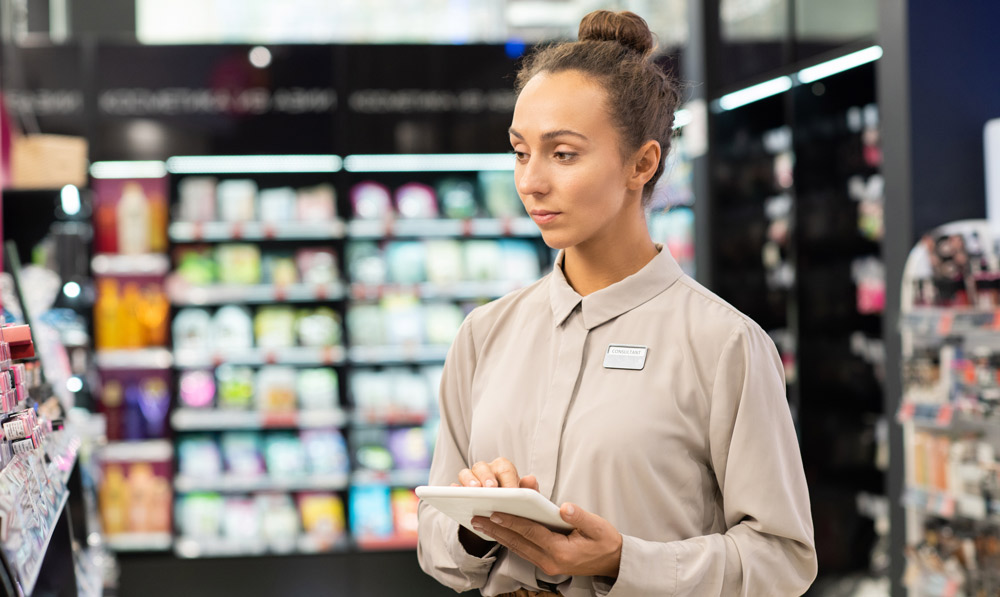
Last year (2020) saw an average increase of US$7.34 versus US$6.20 in 2019, which is equivalent to an 18.4% increase. These figures are mainly explained by three reasons: new buyers, new products, larger baskets.
- New buyers: with mobility restrictions, people changed their shopping locations, and e-commerce increased. At the same time, the access to local stores for immediate need purchasesalso increased.
- New products: the adaptation of product assortment of each store to meet this “new demand” ofcustomers looking to buy SKUs that they usually found in large supermarkets and that are now part of the assortment of C-stores.
- Larger baskets: Customers are looking to reduce visits to points of sale in general, thus significantly optimizing their shopping through larger product formats and taking advantage of being in the store to complement their purchases with more items
However, these changes are still in the making, and the instability in the environment we face today will likely remain constant
Given this new scenario, it is essential for C-Store chains to have excellent communication between stores so that they can share best operational practices and, at the same time, maintain control and visibility of what is happening in each store. Communication and coordination become especially relevant to raise awareness of changes in consumer buying patterns, take advantage of the opportunity to implement the necessary changes on time, and then replicate the success stories in the rest of the chain
A very illustrative case of this ability to adapt and take advantage of opportunities: Since it was impossible to go out partying, some stores opted to put together packs to celebrate at home, generated delivery, adapted opening hours, segmented their maps of stores, and generated newstrategies. Stores achieved all these after monitoring with the right tools, which allowed them to make decisions on time and act.
It is evident to us the key role that technology plays within the entire process that involves continuous and constant decision making. It links stores, helps in triggering actions, and operatesas a source of information, both in terms of data and images. Technology’s vital function becomes even more relevant when central areas of the company, suppliers, and others are involved, making communication an even more complex process.
Although in the first instance stores must detect new customer needs to develop changes, the convenience stores that have achieved success are those that reacted to the situations that were occurring in their stores. For example, changes in the intensity of sales during the day, redistributing the work of the staff, and innovation to attract customers in those areas where they were losing sales.
A case that describes very well how it is possible to take advantage of a new consumption occasion for Convenience Stores is the change generated by the restriction of social and entertainment outings. Stores expanded the assortment of alcoholic beverages and snacks, and the company developed a delivery system or alliances with companies dedicated to it. At the same time, stores adapted the opening hours, segmented the location maps, and generated newstrategies. These decisions and changes were achieved at the stores after monitoring and reacting with the appropriate tools.
To be able to implement the changes, zone or district managers are a crucial element. They must have an objective, detailed, and more innovative view of the operation of the stores to contribute with valuable information to have a global perspective at a company level.
However, in daily operations, the role of these positions is generally focused on solving problemsand coordinating solutions that involve different areas of the company. Having an incident management system with automated tasks that links the entire operation and generates the necessary actions with the areas in charge of resolving them will allow the zone or district manager to dedicate time to aspects more valuable to their stores. It will free time for them to find new opportunities in consumer behavior that are not detected today and could be scalableto the entire organization.
Technology
All the changes that the pandemic has generated have made more evident than ever the need toimprove the daily operation of stores by incorporating technology.
With Frogmi, you can report in-store incidents and activate an automated workflow to be solved by the areas in charge, increasing the productivity and speed of solutions. It gives visibility of what is happening in many stores in real-time, allowing problems to be solved immediately and make critical decisions at the right time.
Through our platform, it is possible to trace the different variables being measured and thus identify those that are effectively leveraging sales for the current context.
Another advantage of Frogmi is that it allows you to store all the data and make decisions based on quantitative analysis through the results of each data or indicator. Most importantly, you can make decisions on the spot and act immediately, thanks to the task manager. The area or districtmanager can evaluate what works best in specific locations and generate automated tasks to successfully activate sales — for example, using data on the sales of products by zone and checking that the best-selling products are available and implemented in special displays.
Undoubtedly, the advantages that Frogmi will give you will help you increase sales and bein line with the times by implementing technology in daily tasks



